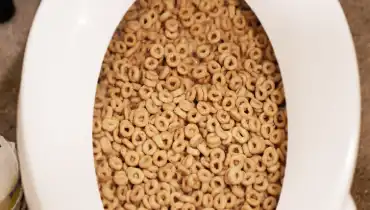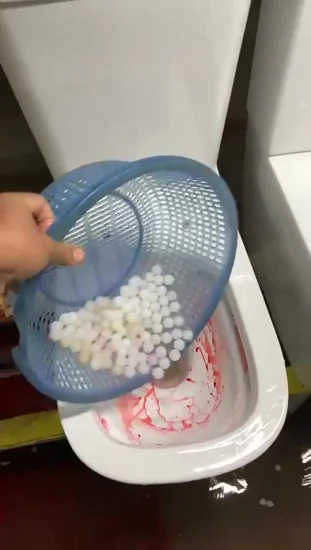Is it Acceptable to Flush Food in the Toilet?
Is it Acceptable to Flush Food in the Toilet?
Blog Article
Are you currently searching for help about Is it safe to flush food (especially rice) down the toilet??

Introduction
Many people are frequently faced with the dilemma of what to do with food waste, specifically when it pertains to leftovers or scraps. One typical question that arises is whether it's all right to flush food down the toilet. In this short article, we'll look into the reasons people could consider purging food, the consequences of doing so, and different methods for correct disposal.
Reasons why people might consider purging food
Lack of awareness
Some people might not know the prospective injury caused by flushing food down the bathroom. They might erroneously believe that it's a harmless method.
Comfort
Purging food down the commode might seem like a quick and easy solution to throwing away undesirable scraps, particularly when there's no close-by trash can offered.
Negligence
Sometimes, people might simply choose to flush food out of large idleness, without taking into consideration the effects of their actions.
Consequences of flushing food down the toilet
Ecological effect
Food waste that ends up in rivers can contribute to pollution and harm water environments. Additionally, the water made use of to flush food can strain water sources.
Plumbing problems
Flushing food can cause clogged pipelines and drains, triggering pricey plumbing repair services and troubles.
Sorts of food that ought to not be purged
Coarse foods
Foods with fibrous textures such as celery or corn husks can obtain entangled in pipelines and cause clogs.
Starchy foods
Starchy foods like pasta and rice can take in water and swell, resulting in clogs in pipes.
Oils and fats
Greasy foods like bacon or food preparation oils need to never ever be purged down the bathroom as they can solidify and cause clogs.
Correct disposal techniques for food waste
Utilizing a garbage disposal
For homes outfitted with waste disposal unit, food scraps can be ground up and flushed through the plumbing system. Nonetheless, not all foods appropriate for disposal in this manner.
Recycling
Certain food packaging materials can be recycled, minimizing waste and reducing ecological effect.
Composting
Composting is an eco-friendly method to deal with food waste. Organic products can be composted and used to enhance dirt for horticulture.
The relevance of proper waste administration
Reducing ecological harm
Appropriate waste management practices, such as composting and recycling, assistance lessen pollution and maintain natural resources for future generations.
Safeguarding plumbing systems
By staying clear of the technique of flushing food down the bathroom, home owners can prevent pricey plumbing repair services and preserve the honesty of their pipes systems.
Verdict
Finally, while it might be alluring to purge food down the bathroom for comfort, it is necessary to recognize the prospective repercussions of this action. By adopting correct waste monitoring methods and disposing of food waste sensibly, people can contribute to healthier pipes systems and a cleaner atmosphere for all.
FLUSH FOOD DOWN THE TOILET?
FLUSHING FOOD CAN CAUSE BLOCKED DRAINS IN YOUR HOME
All of the plumbing fixtures in your home are connected to the same sewer pipe outside of your home. This outdoor sewer pipe is responsible for transporting all the wastewater from your home to the Council sewer mains. Even small pieces of food that go down the kitchen sink can cause problems for your sewer. It should therefore be obvious that flushing larger bits of food, such as meat, risks a clog in either the toilet itself or the sewer pipes. Flushing greasy food is even more problematic because oil coagulates when it cools, coating the interior lining of your pipes.
THE TOILET IS NOT A BIN
Food isn’t the only thing that people shouldn’t be flushing down the toilet. People use the toilet to dispose of all kinds of things such as tampons, makeup wipes, dental floss, kitty litter and even underwear. Water goes to great lengths to educate residents about the high costs and stress placed on wastewater treatment systems simply from people flushing the wrong stuff down the toilet. It costs taxpayers millions of dollars each year, and homeowners thousands in blocked drain repairs.
FLUSHING FOOD IS A WASTE OF WATER
Flushing food is a waste of our most precious resource - water. In June this year Level 1 water restrictions were introduced to protect water supply from drought conditions. Much of New South Wales continues to be affected by prolonged drought with recent figures revealing up to 97 per cent of the state remains in drought. Depending on whether you have a single or dual flush toilet, every single flush uses between five and 11 litres of water. In the current climate this is a huge amount of water to be wasting on flushing food that should be placed in the bin (or better yet, the compost).
https://www.jabplumbingsolutions.com.au/blog/can-you-flush-food-down-the-toilet

We were guided to that report on What Can Happen If You Flush Food Down the Toilet? through an associate on a different web address. If you enjoyed our blog entry kindly do not forget to share it. Many thanks for going through it.
Click Here Report this page